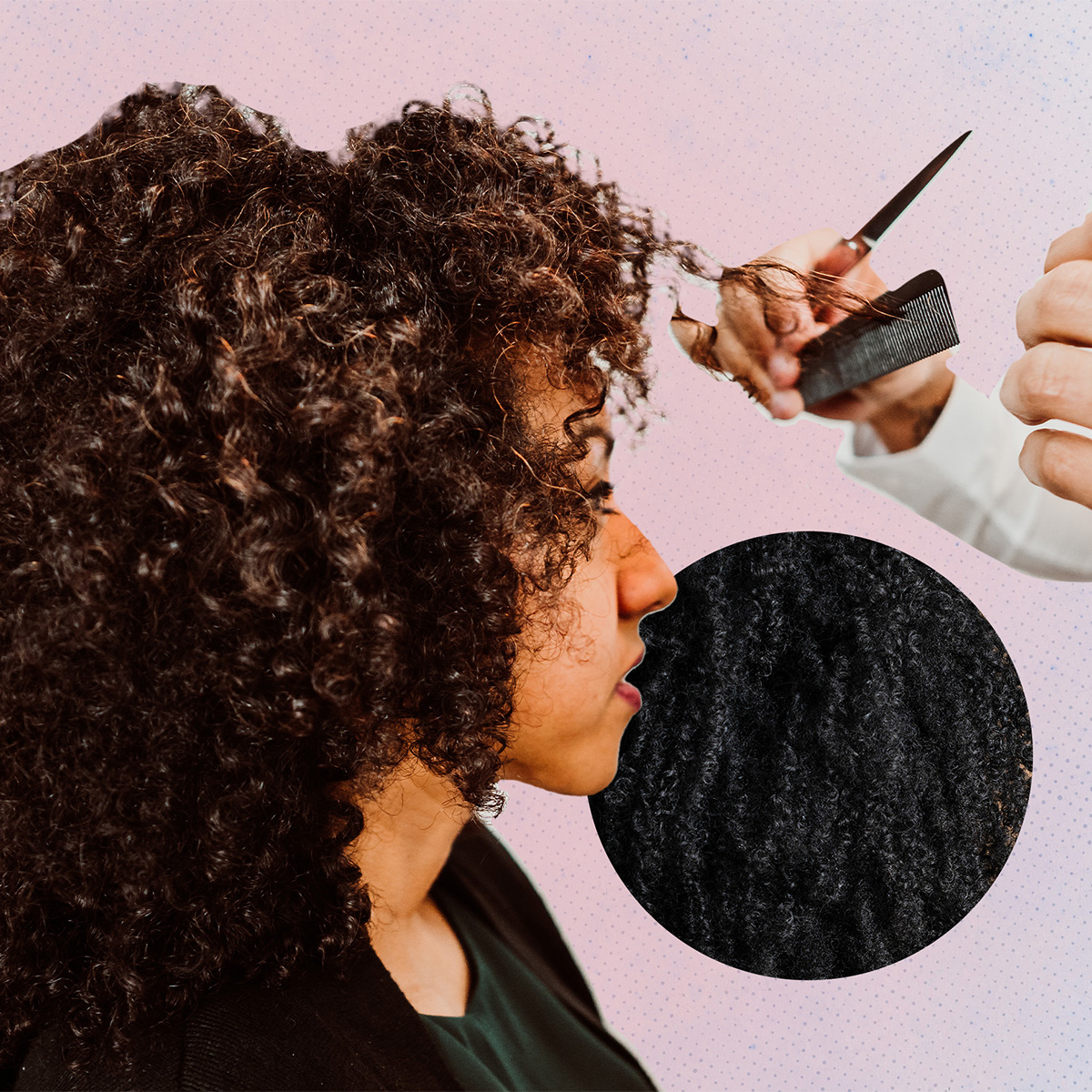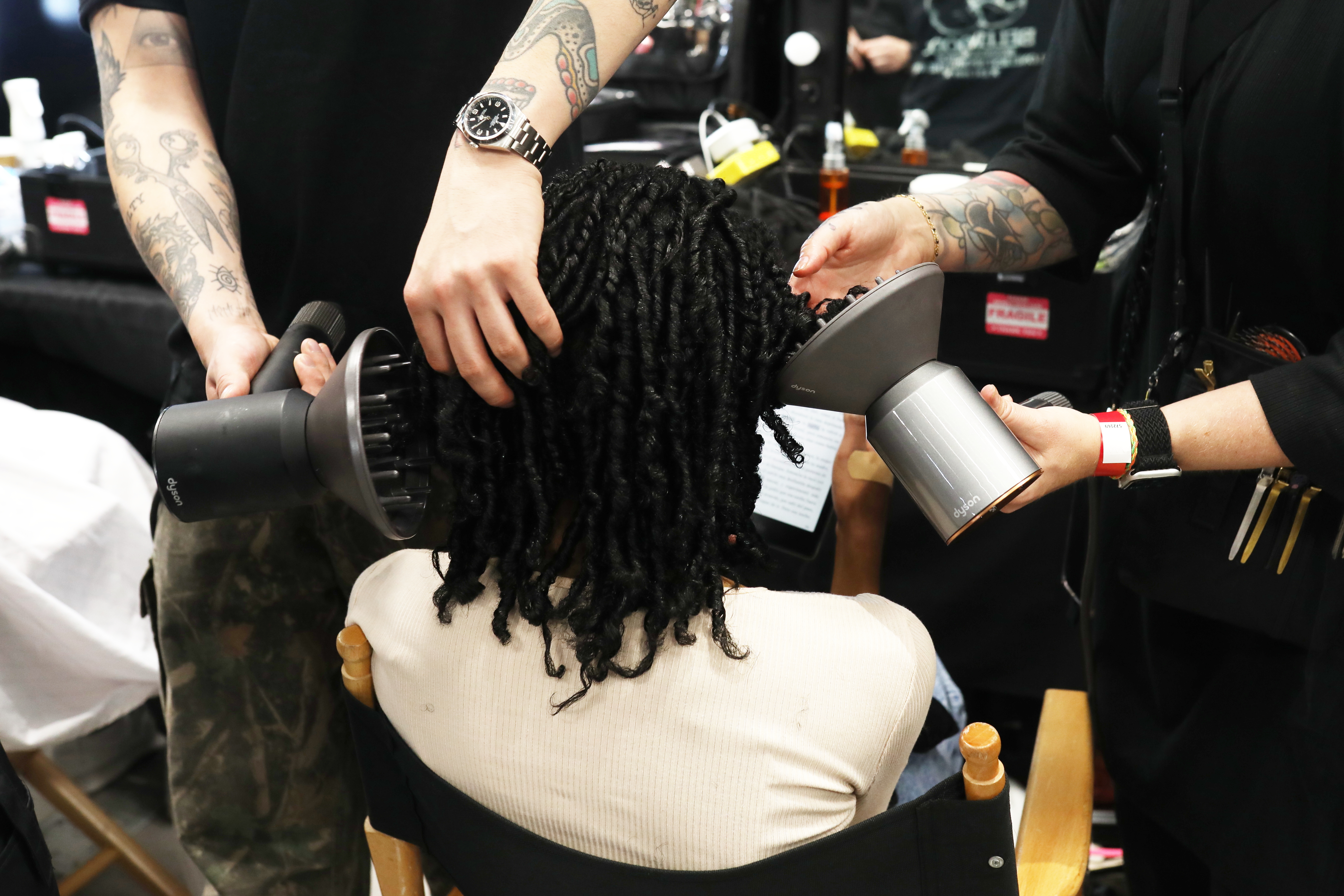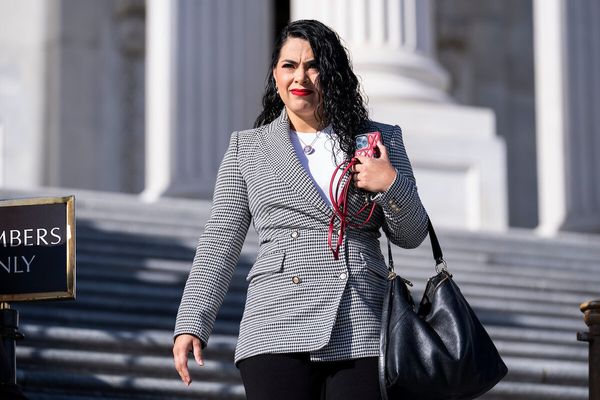
In November 2021, Louisiana made history as the first state to mandate a new rule in its cosmetology schools: Students must know how to cut textured hair in order to receive their license. Chairman of the Louisiana Board of Cosmetology (BOC), Edwin Neill, who also serves as the current president of Aveda Arts & Sciences Institute, led the charge for the ruling in an effort to close the education gap and create a more welcoming salon environment for customers.
"There are still sometimes disparities in the salon experience between people with textured hair and those with naturally straight hair,” Neill shared in a 2021 statement, reported by ABC News. “We want to ensure that licensed cosmetologists in Louisiana are able to do all types of hair."
However, at the time, the new state mandate focused solely on cutting techniques for textured hair. The Professional Beauty Association (PBA) wanted to push the cosmetology curricula and licensing requirements further—both in Louisiana and other states across the country. In response, members of the PBA joined forces with hair industry professionals from major beauty corporations like L’Oréal, Aveda, and Estée Lauder to form the Texture Education Collective (TEC) in 2023.
“We were inspired by the strides they made [in Louisiana],” Erica Roberson-Peters, Vice President of DEI Business Development for Professional Products at L’Oréal and TEC member, shares with Marie Claire. “I think when we initiated the TEC to be formed to further advocate for the legislation, we felt all disciplines should be taught in cosmetology school—cutting, color, care, styling—it should be inclusive of all textures, all hair types.”
Since the formation of the TEC, New York, Minnesota, Connecticut, and most recently California have joined Louisiana and created their own legislation requiring cosmetology licensees in their respective states to be formally trained in textured haircare.
So, what goes into the curriculum, how will the legislation affect the industry at large, and what’s next for the future of textured hair education?
Expanding Textured Hair Education
In September 2024, California became the latest state to implement the new law. It's also home to the largest number of cosmetology schools in the country.
“The impacts we can make here, particularly among the future talent and professionals in the industry, are significant,” shares California Assemblywoman Dr. Akilah Weber, who championed the legislation in the state. “For the community of Americans this directly affects, imagine not having to wonder which salon you can go to for your haircare needs, not needing to factor in research, or travel time.”

As for the curriculum, Shawn Stearns, Associate Vice President of School, Education, and Training for American Brands at L'Oréal—who, along with Roberson-Peters, helps create guidelines for what should be taught—shares that while each state determines its own courses, the TEC helps to examine specific gaps in education to help instructors know exactly what they need to focus on and who is equipped to teach.
“If [the schools] know a certain topic or subject is going to be tested and evaluated, they will, by default, spend more time on it,” Sterns shares. “We've put into place programs where schools can sign up, and have access to this training. Not just for their students, but also for their instructors.”
It's a welcome venture not just for students, but teachers as well: An estimated 75 percent of practicing stylists hope to seek additional training to learn how to style textured hair, according to the TEC.
The Impact on Consumers and Stylists
“I feel very anxious when I’m in the hands of someone I sense can’t handle my hair,” shares one beauty editor, who asks to remain anonymous. “I have very thick, natural hair that is multi-textured, from 3C to 4C. It gets tangled very, very easily. It's a lot for me to wash and do on my own, so I prefer letting someone else handle it.”
While the editor feels comfortable with their regular stylist, they often feel trepidation about press events that offer on-site hairstyling as a means of testing the product or treatment. To remedy their apprehensions, the editor asks the publicity team in advance if there will be stylists available who can properly care for their hair. Unfortunately, the editor says, they don’t always get a straight, or honest, answer.
Every client deserves to leave the salon feeling confident and at ease.
“I’ve gone to several press events where I was told that they had a stylist on hand who was very skilled with my hair type, and that was not the case,” the beauty editor says. “Either the stylist was great at washing and detangling my hair but was not great at styling it, or vice versa. If you say you can do textured hair, I expect you not to be lazy and put in the work—it is your job.”
Leaving a salon feeling dissatisfied is a sentiment those with textured hair know all too well. Often, stylists haven't been appropriately trained, and the consequences can be devastating.
“Inadequate hair care can lead to immediate distress—think frizz, heat damage, breakage, and an uneven cut,” shares hairstylist and psychologist Afiya Mbilishaka, Ph.D. “Consistent poor haircare can cause damage that takes months, even years, to repair. It can lead to hair thinning and loss, and for many, it can mean avoiding social situations. It's not just about the appearance of the hair—it's about how you feel about yourself when you look in the mirror.”
It's just one reason why mandating textured hair education in cosmetology schools is critical: Every client deserves to leave the salon feeling confident and at ease.

Celebrity hairstylist Vernon François has made a lasting impression on the industry by creating stunning hairstyles for celebrities like Lupita Nyong’o with highly textured hair—which has historically been deemed “unmanageable” or “difficult." François believes that extensive, long-term education must be the solution for stylists who are unequipped or lack training.
“These [education] gaps foster lasting anxiety around handling textured hair, leaving many hairstylists unsure of where to even begin,” François shares. “Hair is one of the most transformative elements we have access to in this life. And hairstyling goes far beyond the physical act. It has a profound influence on how we see ourselves, show up for ourselves, and believe others should perceive us.”
Stearns agrees, adding that a bad experience can also be “horrifying” for an untrained stylist.
“From a professional standpoint, there's that feeling of ‘I'm deficient, I'm lacking in my skill set, and I'm lacking in my ability,’” he shares, adding that a professional never wants to tell a client that he or she doesn’t know how to handle their hair and that they’ll have to go elsewhere. “That's what we want to eradicate.”
Beyond the salon experience, training stylists to work across all hair types is economically beneficial. The TEC estimates that 65 percent of the world’s consumer population—around one billion people—have textured hair. Couple that statistic with the fact that the textured hair consumer goods industry is projected to be valued at $15.6 million by 2031, according to market research group Allied Market Research. Expanding training isn't just beneficial for the stylist and the client—it's good for business.
Next Steps
Mandating that textured hair education be a requirement of cosmetology licensing goes hand-in-hand with movements like the CROWN Act—which has created legislative protections to end hair discrimination—by helping to normalize all hair types and eliminating the fear some stylists may feel when working with textured hair.
“Education, policy change, and culture-shifting are just a few ways to tackle what has been a longstanding and problematic practice of hair discrimination,” says CROWN Act social impact strategist Adjoa B. Asamoah, Ed.D. “Beauty inclusivity is key, and together [with cosmetology schools] we can move the needle.”
So what will it take to make textured hair education mandatory in cosmetology schools nationwide? For one thing: Political backing. Most states must have legislative support before they’re able to craft a new curriculum.

“Until it becomes a standard mandate for testing and a mandate for stylists to get their license, we know that some of these texture education programs won't be fully adopted,” says L’Oréal’s Head of Public Affairs Kelly Molinari.
The TEC is already looking ahead. “New Jersey is still pending,” Molinari says. “I also think Washington state will be one we will definitely take on [in the future], and we’ll see where we go from there.”
As for the stylists who are already licensed and practicing? While they’re required to renew their license every two to three years, depending on their state, there’s no mandate that requires them to further their education. However, Sterns shares that there are plenty of TEC programs available for stylists to improve their skills.
For hairstylists, lifelong learning is essential, François insists. “The real challenge is addressing the depth and complexity of textured hair," he says. "This isn’t something that can be adequately learned in a five-week course or a single week of daily training. It’s a commitment to continuous growth.”







